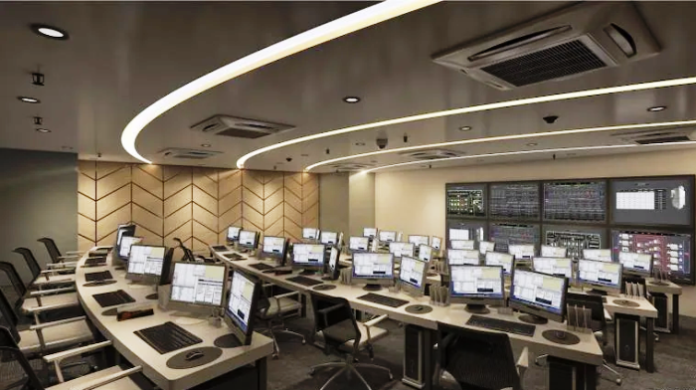Mr. Navin Dhanuka, MD & CEO, ArisUnitern RE Solutions.
The real estate sector witnessed a rise in both the scale and vigor of investments as it ventured into emerging specialized sectors often referred to as alternative assets. In response to the expanding office and residential markets, these non-conventional asset classes extended their reach to cater to shifting demand dynamics and emerged as driving forces for the primary segments. What unfolded is a well-diversified investment playing field, with substantial potential for maximizing value.
As of Q2-23, the office sector represented nearly 65% of total quarterly Private Equity (PE) investments, driven by operational asset acquisitions in Delhi NCR, Mumbai, and Hyderabad. Notably, the flexible workspace segment, such as Flex, has become a significant part of the office sector’s growth story. A market study revealed that the share of space leased by flexible workspace providers in total office leasing increased from 9% in FY20 to 14% in FY23. In addition, the flex sector recorded substantial growth, with space absorption growing by approximately 57% from FY20 to FY23 and about 76% from FY22 to FY23. Digital transformation and vibrant IT and startup ecosystems have contributed to the appeal of these alternative assets. In tech-focused cities like Bengaluru, Hyderabad, and Pune, the share of office space leased by flex operators has risen from 49% in FY20 to an average of 60% in the post-pandemic period (FY22 and FY23). Private investors are increasingly drawn to non-traditional assets to diversify their portfolios and capitalize on the expanding opportunities.
Key alternate segments like warehousing, logistics, and data centers are also spreading their roots thus attracting investments from the thriving private markets. H1-2023 witnessed a cumulative inflow of close to INR 246.8 bn (USD 2.99 bn) which is 51% higher than H1-22, primarily driven by investment in the office segment and increased investments in alternate real estate segments like warehousing, logistics, and data centers. On a macro level, India’s growing prominence as a preferred manufacturing destination resulted in significant transactions by global manufacturers who are setting up their base in India.
With India’s rapid digitization, surging digital data consumption, and the rise of tech-enabled businesses, there has been a growing demand for data centers. Given the pace at which India’s digital ecosystem is expanding where technology plays a central role in virtually every aspect, it is anticipated that the gross colocation capacity will increase, and a large volume of space will be leased by data centers. Also, it is expected that around 290 MW of gross capacity will be added by 2023. This proves ample opportunities are available for private investors to explore this high-potential alternative segment.
A report by a global real estate consultant highlighted how millennials constitute 40% of the total workforce. These millennials are part of a young & vibrant economy, are tech-savvy, possess stable financial resources, and have disposable income. They are continually seeking better opportunities and career advancement, valuing flexibility and convenience in their lifestyle over property ownership. These factors gave rise to concepts like co-living as one of the most viable and emerging alternate asset classes. A study suggests that the ‘co-living’ market in the country is expected to grow at a CAGR of 17% and by 2024 it will touch nearly INR 1 trillion. This is a viable and lucrative avenue for private investors to explore as the segment can be leveraged as a high-income-yielding investment instrument.
Apart from the overall growth of the alternate segments that are attracting investors, other factors include diversification, risk mitigation, accessibility via fractional ownership, structure debt, etc. The fractional ownership industry which is expected to reach USD 8.9 billion by 2025 and growing at a CAGR of 10.5% comprised a portfolio of high-income yielding alternate assets and this is allowing retail investors to diversify their investments.
New investment structures like Real Estate Investment Trusts (REITs) and Alternative Investment Funds (AIFs) are in a great spot in exploring new possibilities for alternative real estate, within the context of the flourishing private markets. With the growing interest of private investors in the real estate market, REITs and AIFs are offering them a range of opportunities and structured investment themes. These options include enhanced governance, transparency, portfolio diversification, and, importantly, a streamlined and hassle-free investment experience. As a result, High Net Worth Individuals (HNIs) and Ultra High Net Worth Individuals (UHNIs) are shifting their course from traditional investment avenues and looking for options that are not only high yielding but also regulated and transparent. AIFs provide these investors with the ideal platform to maximize the value of their investments and project strong long-term returns through investments in alternative real estate sectors such as coworking, data centers, warehousing & logistics, co-living, student-living, etc., in addition to traditional asset classes.
As buyer and occupier sentiments undergo transformation, developers will be always open to innovation, creating new possibilities for the alternative real estate segments that have already embarked on the journey. While traditional real estate will continue to dominate, alternative real estate will be the fuel to accelerate overall growth. Undoubtedly for the investors, there’s never been a better time to maximize the potential of this sector.



















